
News Directory
- 1. Introduction to Cylindrical Roller Bearings
- 2. Types of Cylindrical Roller Bearings
- 3. Key Features and Benefits
- 4. Applications of Cylindrical Roller Bearings
- 5. Selecting the Right Cylindrical Roller Bearing
- 6. Installation and Maintenance
- 7. Top Cylindrical Roller Bearing Manufacturers
- 8. Common Issues and Troubleshooting
- 9. Future Trends in Cylindrical Roller Bearings
- Conclusion
What are cylindrical roller bearings: A comprehensive guide
1. Introduction to Cylindrical Roller Bearings
1.1 What is a Cylindrical Roller Bearing?
Cylindrical roller bearings are a type of rolling-element bearing that uses cylindrical rollers as their rolling elements. Unlike ball bearings, which use spherical balls, the larger contact area of cylindrical rollers with the raceways allows them to distribute loads over a wider surface. This design makes them exceptionally well-suited for applications involving high radial loads and high speeds.
1.2 Basic Components: Inner Ring, Outer Ring, Rollers, and Cage
To understand how cylindrical roller bearings work, it's helpful to know their core components:
| Component | Description |
| Inner Ring | This ring is typically mounted on the shaft and has a raceway on its outer diameter where the cylindrical rollers run. |
| Outer Ring | This ring is usually housed within the machine component and has a raceway on its inner diameter that the rollers contact. |
| Rollers | These are precision-machined cylinders that provide the rolling contact between the inner and outer rings. Their cylindrical shape allows for a line contact with the raceways, enhancing load capacity. |
| Cage | The cage, also known as a retainer, separates and guides the rollers at equal intervals around the circumference. It prevents the rollers from rubbing against each other, reducing friction and heat. |
1.3 How Cylindrical Roller Bearings Work
Cylindrical roller bearings operate on the principle of rolling motion. When a radial load is applied, the load is distributed across several cylindrical rollers in contact with both the inner and outer raceways. The rollers, held in place by the cage, roll smoothly along these raceways as the shaft rotates.
The key to their performance lies in the line contact between the cylindrical rollers and the raceways. This line contact, as opposed to the point contact in ball bearings, allows for superior distribution of forces, enabling the bearing to support much greater radial loads without excessive deformation or wear. The precision manufacturing of these components ensures minimal friction and efficient power transmission, even at high rotational speeds. While primarily designed for radial loads, some configurations of cylindrical roller bearings can also accommodate limited axial (thrust) loads due to their flange designs.
2. Types of Cylindrical Roller Bearings
Cylindrical roller bearings come in various designs, each tailored to specific operational requirements. The primary differences lie in the configuration of their flanges (ribs) on the inner and outer rings, and the presence or absence of a cage.
2.1 Single Row Cylindrical Roller Bearings
Single row cylindrical roller bearings are the most common type. They feature a single set of cylindrical rollers guided by a cage. Their design allows for high radial load capacity and high-speed operation. Depending on the flange configuration, they can also accommodate some axial displacement.
| Type Designation | Flange Configuration | Key Characteristic |
| NU | Outer ring with two integral flanges, inner ring without flanges. | Allows for axial displacement of the shaft relative to the housing in both directions. This is ideal for applications where thermal expansion or contraction might occur. |
| NJ | Outer ring with two integral flanges, inner ring with one integral flange. | Accommodates axial displacement in one direction only. It can take some axial load in that direction. Often paired with an NU type bearing on the other end of a shaft to locate the shaft axially. |
| NUP | Outer ring with two integral flanges, inner ring with one integral flange and one non-integral flange (a loose rib or washer). | Provides axial location in both directions, making it a "locating" bearing. The loose rib simplifies mounting and dismounting. |
| N | Inner ring with two integral flanges, outer ring without flanges. | Similar to NU type but with the axial displacement capability primarily on the outer ring. Less common than NU for general applications. |
2.2 Double Row Cylindrical Roller Bearings
As their name suggests, double row cylindrical roller bearings incorporate two rows of cylindrical rollers. This design significantly increases their radial load capacity and rigidity compared to single-row types. They are particularly well-suited for machine tools, rolling mills, and other heavy-duty applications where precision and high load support are critical. Due to their robust design, they typically do not accommodate axial displacement.
2.3 Full Complement Cylindrical Roller Bearings
Full complement cylindrical roller bearings are designed without a cage, allowing for the maximum possible number of rollers to be incorporated. This absence of a cage means they have an even higher radial load capacity than their caged counterparts for a given size. However, the direct contact between rollers can lead to higher friction and heat generation, limiting their suitability for very high-speed applications. They are often used in situations with high static or oscillating loads where lower speeds are acceptable.
2.4 Multi-Row Cylindrical Roller Bearings
While not as common as single or double-row types, multi-row cylindrical roller bearings (more than two rows) are manufactured for extremely demanding applications requiring the absolute highest radial load capacity and rigidity. These are often custom-engineered for specific heavy industrial machinery, such as large rolling mill stands.
2.5 Cylindrical Roller Thrust Bearings
Unlike the previously mentioned types, which primarily handle radial loads, cylindrical roller thrust bearings are specifically designed to accommodate heavy axial (thrust) loads. They feature short cylindrical rollers arranged in a star-like pattern between two raceway washers. Their design allows them to support significant forces acting parallel to the shaft, making them suitable for applications like crane hooks, drilling rigs, and vertical shafts.
3. Key Features and Benefits
Cylindrical roller bearings are highly valued in various industries due to their distinct design and the operational advantages they offer. These features make them a preferred choice for demanding applications.
3.1 High Radial Load Capacity
One of the most significant benefits of cylindrical roller bearings is their exceptionally high radial load capacity. This stems from the line contact between the cylindrical rollers and the raceways. Unlike the point contact found in ball bearings, the distributed load over a larger surface area allows them to withstand much heavier radial forces without experiencing excessive stress or deformation. This makes them ideal for machinery that handles substantial weight or experiences significant operational forces perpendicular to the shaft.
3.2 Suitability for High Speeds
Despite their robust load capacity, cylindrical roller bearings are also well-suited for high-speed applications. Their precision manufacturing, combined with the low friction generated by the rolling elements (especially in caged designs), allows them to operate efficiently at high rotational velocities. The design minimizes skidding and heat generation, contributing to stable performance and extended bearing life even under rapid rotation.
3.3 Low Friction
The rolling motion of the cylindrical rollers, guided by a cage in most common types, results in low friction during operation. This minimal friction leads to several advantages:
-
Reduced Power Consumption: Less energy is wasted as heat, making the system more energy-efficient.
-
Lower Operating Temperatures: Reduced friction means less heat buildup, which extends lubricant life and prevents premature bearing failure.
-
Longer Service Life: Less wear on the bearing components due to reduced friction contributes to a longer overall lifespan for the bearing.
3.4 Rigidity
Rigidity is another crucial characteristic of cylindrical roller bearings. Their robust design and the distribution of load over multiple rollers provide excellent stiffness. This high rigidity is particularly important in applications where precision and minimal deflection are critical, such as in machine tool spindles or gearboxes, ensuring consistent operational accuracy and stability.
3.5 Accommodating Misalignment
While cylindrical roller bearings primarily excel in handling radial loads and often require precise alignment, some specific designs can accommodate limited axial displacement or misalignment. For instance, bearings with an inner ring having no flanges (NU type) or an outer ring with no flanges (N type) allow the shaft to move axially relative to the housing. This feature can be beneficial in applications where thermal expansion or minor mounting inaccuracies might lead to slight axial shifts, preventing damaging stresses on the bearing. However, it's important to note that they are not designed to accommodate significant angular misalignment, which would typically require self-aligning bearing types.
4. Applications of Cylindrical Roller Bearings
Cylindrical roller bearings are versatile and indispensable components across a wide range of industries due to their ability to handle high radial loads and speeds. Their robust design makes them suitable for machinery that operates under demanding conditions. Here are some key applications:
4.1 Electric Motors
In electric motors, cylindrical roller bearings are frequently used to support the rotor shaft. Their high radial load capacity is crucial for handling the weight of the rotor and the forces generated during operation, especially in larger and more powerful motors. The ability to operate at high speeds with low friction also contributes to the efficiency and longevity of the motor. Often, an NU or N type bearing is used at one end to allow for thermal expansion of the shaft, while a deep groove ball bearing or a locating cylindrical roller bearing (NUP, NJ) might be used at the other end to provide axial location.
4.2 Gearboxes
Gearboxes are another primary application for cylindrical roller bearings. They are used to support the gear shafts, where they must withstand the significant radial forces generated by the meshing gears. The high rigidity of these bearings ensures precise gear engagement, reducing noise and vibration, and enhancing the overall efficiency and lifespan of the gearbox. Both single and double row cylindrical roller bearings are commonly found in industrial and automotive gearboxes.
4.3 Rolling Mills
Rolling mills, which process metals into sheets, plates, or other forms, rely heavily on cylindrical roller bearings. The rolls in these mills experience immense radial forces as they deform the metal. Double row and multi-row cylindrical roller bearings, often of the full complement type, are specifically chosen for their extreme radial load capacity and rigidity to maintain precise roll gap and ensure consistent product quality under punishing conditions.
4.4 Railway Vehicles
In railway vehicles, cylindrical roller bearings are vital components in wheelsets and traction motors. They bear the substantial radial loads from the weight of the train and dynamic forces during motion. Their durability and high-speed capability are essential for the safe and reliable operation of trains. Specialized designs are often employed to withstand the demanding operating environment, including varying temperatures and vibrations.
4.5 Pumps and Compressors
Pumps and compressors often utilize cylindrical roller bearings to support their rotating shafts. These machines typically operate at moderate to high speeds and can generate considerable radial loads from fluid pressure or gas compression. The bearings' ability to handle these loads efficiently while maintaining low friction contributes to the reliable and energy-efficient operation of pumps and compressors in various industrial processes.
5. Selecting the Right Cylindrical Roller Bearing
Choosing the appropriate cylindrical roller bearing is critical for the optimal performance, longevity, and reliability of any machinery. A careful evaluation of the operating conditions and specific requirements of the application is essential.
5.1 Load Requirements (Radial and Axial)
The primary consideration when selecting a cylindrical roller bearing is the load it will experience. Cylindrical roller bearings are primarily designed for high radial loads. Therefore, it's crucial to accurately determine the magnitude and nature of these forces. While most types handle radial loads exceptionally well, some designs (like NJ or NUP types) can also accommodate limited axial loads. If significant axial forces are present, a different bearing type or a dedicated cylindrical roller thrust bearing might be necessary.
| Load Type | Description | Bearing Consideration |
| Radial | Forces acting perpendicular to the bearing's axis of rotation. This is the primary load type for cylindrical roller bearings. | All cylindrical roller bearings excel here. Full complement and multi-row types offer the highest capacities. |
| Axial | Forces acting parallel to the bearing's axis of rotation (thrust loads). Standard cylindrical roller bearings accommodate very little to no axial load unless specifically designed with flanges for this purpose. | NJ, NUP, and specifically cylindrical roller thrust bearings are designed for varying degrees of axial load. NU and N types allow for axial displacement, but do not carry significant axial load. |
5.2 Speed Requirements
The rotational speed of the shaft is another critical factor. Cylindrical roller bearings are generally suitable for high speeds, especially caged designs due to their lower internal friction. However, full complement bearings, while offering higher load capacity, have more direct roller-to-roller contact, which can generate more heat at high speeds and limit their maximum permissible speed. The chosen bearing must have a limiting speed rating that exceeds the application's maximum operating speed to prevent overheating and premature failure.
5.3 Operating Temperature
The operating temperature of the application significantly impacts bearing selection. High temperatures can affect the bearing's material properties, reduce lubricant effectiveness, and alter internal clearances. Bearings designed for standard operating temperatures may not perform adequately in extreme heat. Special high-temperature lubricants or bearings made from specific materials might be required for elevated temperature environments to ensure stability and acceptable service life.
5.4 Lubrication Considerations
Proper lubrication is paramount for the performance and lifespan of any bearing. The type of lubricant (grease or oil), its viscosity, and the lubrication method (e.g., oil bath, grease packing, circulating oil) must be chosen based on the bearing type, speed, temperature, and load. For cylindrical roller bearings, effective lubrication prevents metal-to-metal contact, reduces friction and wear, dissipates heat, and protects against corrosion. Adequate space for lubricant and appropriate sealing solutions are also important considerations.
5.5 Clearance and Tolerances
Clearance refers to the internal play within the bearing. Proper clearance is vital for optimal operation. Too little clearance can lead to excessive heat generation and premature failure, while too much can result in noise, vibration, and reduced precision. Bearings come with various internal clearance values (e.g., C0, C3, C4), and the appropriate one depends on the mounting fit, temperature differences between the shaft and housing, and the desired rigidity. Tolerances relate to the precision of the bearing's dimensions. Selecting bearings with appropriate tolerance classes (e.g., P0, P6, P5) is crucial for applications requiring high running accuracy and low vibration, such as in machine tool spindles.
6. Installation and Maintenance
Proper installation and consistent maintenance are paramount to maximizing the lifespan and ensuring the reliable performance of cylindrical roller bearings. Neglecting these aspects can lead to premature failure, increased downtime, and higher operational costs.
6.1 Proper Installation Techniques
Correct installation is the first critical step in ensuring bearing longevity. Improper mounting can cause damage to raceways, rollers, or cages, leading to early failure.
| Installation Method | Description | Key Considerations |
| Cold Mounting | Involves pressing the bearing onto the shaft or into the housing using mechanical or hydraulic tools. This method is suitable for smaller bearings or when interference fits are light. | Use proper mounting tools to apply force evenly to the ring being fitted. Never strike the outer ring when pressing onto a shaft or the inner ring when pressing into a housing, as this can damage the rolling elements or raceways. |
| Hot Mounting | Involves heating the bearing (usually the inner ring) to expand it before sliding it onto the shaft. This is the preferred method for larger bearings or those with significant interference fits, as it prevents damage during mounting. | Use controlled heating methods like induction heaters or oil baths. Ensure the temperature does not exceed recommended limits (typically 80-120°C / 176-248°F) to avoid altering material properties or damaging seals. Use heat-resistant gloves. |
| Hydraulic Mounting | Utilizes hydraulic pressure to expand the bearing bore or compress the housing bore, allowing for easy mounting. This method is common for very large bearings or those requiring precise positioning. | Requires specialized hydraulic equipment. Ensure cleanliness and follow manufacturer's instructions for pressure and fitting. |
| Checking Clearance | After mounting, it's essential to verify the residual internal clearance of the bearing (if applicable) to ensure it falls within the specified range for optimal operation. | Use feeler gauges or specialized tools. Improper clearance can lead to excessive heat or reduced life. |
6.2 Lubrication Best Practices
Lubrication is the lifeblood of a bearing. It reduces friction, dissipates heat, prevents wear, and protects against corrosion.
-
Choose the Right Lubricant: Select a grease or oil based on the bearing type, operating speed, temperature, and load conditions. Consult bearing manufacturer guidelines.
-
Optimal Quantity: Apply the correct amount of lubricant. Too little leads to metal-on-metal contact and wear; too much can cause overheating and churning, especially with grease.
-
Proper Application: Use clean tools and methods. Ensure the lubricant reaches all rolling elements and raceways.
-
Regular Re-lubrication: Establish a re-lubrication schedule based on operating hours, speed, temperature, and environmental factors. Automated lubrication systems can provide consistent and precise application.
6.3 Condition Monitoring
Condition monitoring involves regularly assessing the bearing's health to detect potential issues before they lead to catastrophic failure. This proactive approach helps in scheduling maintenance and preventing unplanned downtime.
-
Vibration Analysis: Changes in vibration patterns often indicate bearing damage, wear, or misalignment. Regular vibration measurements can detect issues early.
-
Temperature Monitoring: An increase in operating temperature can signal insufficient lubrication, excessive load, or internal damage.
-
Acoustic Emission: Listening for unusual noises (e.g., grinding, squealing) can provide early warnings of bearing distress.
-
Lubricant Analysis: Analyzing used lubricant samples can reveal wear particles, contamination, or lubricant degradation, indicating bearing condition and remaining lubricant life.
6.4 Troubleshooting Common Issues
Even with proper installation and maintenance, issues can arise. Knowing how to troubleshoot common problems can help in quickly diagnosing and rectifying them.
-
Overheating: Often caused by insufficient or incorrect lubrication, over-lubrication, excessive load, or improper fit.
-
Excessive Noise/Vibration: Can indicate contamination, improper mounting, wear, cage damage, or insufficient lubrication.
-
Premature Failure: May stem from improper installation, overloading, inadequate lubrication, contamination, or material defects.
-
Rust/Corrosion: Usually due to moisture ingress, improper storage, or incompatible lubricants.
By adhering to these installation and maintenance best practices, the service life of cylindrical roller bearings can be significantly extended, contributing to the overall reliability and efficiency of machinery.
7. Top Cylindrical Roller Bearing Manufacturers
When it comes to cylindrical roller bearings, several manufacturers consistently stand out for their quality, innovation, and extensive product ranges. Choosing a reputable manufacturer is crucial to ensuring the reliability and performance of your machinery. Here are some of the top global manufacturers, including a leader in specialized bearing solutions:
| Manufacturer | Key Strengths | Noteworthy Products/Specialties |
| Shaoxing Shangyu Flight Seiko Machinery Co., Ltd. (FTM) | Non-standard bearings, high-precision bearings (import substitution), custom solutions, strong R&D (tribology doctor-guided research), advanced CNC machining. | Customized bearings for engineering and textile machinery, high-quality replacement bearings. |
| SKF | Broadest range of bearing types, strong R&D, condition monitoring solutions, global presence. | High-performance cylindrical roller bearings for various industries, integrated bearing units. |
| FAG (Schaeffler Group) | High-quality bearings, strong in automotive and industrial applications, precision engineering. | Diverse range of cylindrical roller bearings, robust designs for heavy loads. |
| Timken | Expertise in tapered roller bearings, but also offers a strong line of cylindrical roller bearings, focus on friction management. | High-capacity cylindrical roller bearings, specialized industrial applications. |
| NSK | Comprehensive range of bearings, focus on precision and motion control, global manufacturing footprint. | Standard and custom cylindrical roller bearings, high-speed applications. |
| NTN | Wide product offering, strong presence in automotive and industrial sectors, focus on durability. | Cylindrical roller bearings known for long service life and reliability. |
8. Common Issues and Troubleshooting
Even with proper selection and installation, cylindrical roller bearings can encounter issues. Understanding these common problems and their typical causes can greatly assist in troubleshooting and extending bearing life.
8.1 Premature Failure
Premature failure refers to a bearing failing before it reaches its calculated design life. This can manifest in various ways, often leading to increased noise, vibration, and eventual seizure.
| Issue Type | Common Causes | Visual/Audible Cues | Potential Solutions |
| Fatigue (Spalling) | - Excessive load (overload) - Insufficient lubrication film - Contamination (water, debris) - Improper mounting (misalignment, too tight fit) |
- Flaking or pitting on raceways or rollers - Increased vibration - Audible crunching or grinding noises |
- Reduce load if possible - Ensure adequate lubrication quantity and quality - Improve sealing to prevent contamination - Re-evaluate mounting procedures and fits |
| Wear | - Abrasive contamination in lubricant - Lack of lubrication - High-speed operation without adequate lubrication - Inadequate material hardness |
- Dull, polished, or scored surfaces on raceways and rollers - Increased internal clearance - Increased noise |
- Improve filtration and sealing to eliminate contaminants - Verify proper lubrication type and schedule - Consider bearings with harder materials or specialized coatings for abrasive environments |
| Corrosion/Rust | - Presence of moisture (water intrusion) - Corrosive chemicals in the environment - Improper storage (high humidity, condensation) - Inadequate rust-preventative lubricant |
- Reddish-brown or black stains/etching on bearing surfaces - Increased friction - Rough operation |
- Improve sealing to prevent water ingress - Use corrosion-inhibiting lubricants - Ensure proper storage conditions - Identify and eliminate sources of corrosive agents |
| Fracture (Cracking) | - Excessive shock loads - Material defects - Improper mounting (e.g., impact during installation) - Stress concentration from nicks or indentations - Extremely tight fits causing ring stress |
- Visible cracks on rings or rollers (often propagated from initial damage) - Sudden catastrophic failure |
- Avoid impact loads; consider dampening mechanisms - Handle bearings carefully during installation - Ensure correct mounting procedures and fits - Inspect new bearings for defects |
| Brinelling/False Brinelling | - Brinelling: Excessive static load or impact loads causing indentations - False Brinelling: Vibration during static conditions, leading to wear at roller contact points (fretting corrosion) |
- Brinelling: Deep indentations on raceways - False Brinelling: Discolored, polished indentations often with reddish-brown residue |
- Brinelling: Reduce static load, prevent impact - False Brinelling: Use appropriate lubrication (e.g., grease with good oil separation properties), consider vibration isolation during transport/storage |
8.2 Noise and Vibration
Increased noise and vibration are often early indicators of bearing problems. Identifying the source of these anomalies is crucial for timely intervention.
| Issue Type | Common Causes | Characteristics of Noise/Vibration | Potential Solutions |
| Excessive Noise | - Insufficient or degraded lubrication - Contamination (dirt, debris) - Damaged raceways or rollers (spalling, wear) - Misalignment - Loose fit (housing or shaft) - Electrical discharge (fluting) |
- Grinding, growling, squealing, rattling, or humming sounds - Varies with speed and load |
- Check lubrication, relubricate or replace lubricant - Improve sealing and cleanliness - Inspect for damage and replace bearing if necessary - Correct misalignment - Verify proper fits; address electrical issues |
| Excessive Vibration | - Unbalance in rotating components (shaft, rotor) - Misalignment (shafts, housing) - Damaged bearing components - Loose fits - Resonance - Contamination |
- High vibration levels (measured with accelerometers) - Specific frequency patterns (can be analyzed to pinpoint source) - Pulsating or erratic vibration |
- Balance rotating components - Align shafts and housings - Replace damaged bearings - Address loose fits - Modify system to avoid resonance - Improve contamination control |
| Overheating | - Insufficient lubrication - Excessive load - Too tight fit (reduced internal clearance) - Misalignment - High ambient temperature |
- Bearing runs abnormally hot to the touch or with temperature monitoring systems - Discoloration of bearing components |
- Verify lubrication quantity and quality - Reduce load - Check and adjust bearing fit and clearance - Correct misalignment - Improve cooling or environmental control |
8.3 Lubrication Problems
Lubrication is the lifeblood of a bearing. Issues related to lubrication are among the most common causes of bearing failure.
| Issue Type | Common Causes | Observable Effects | Potential Solutions |
| Insufficient Lubrication | - Infrequent relubrication - Incorrect amount of lubricant - Clogged grease fittings or lines - Leaking seals - Evaporation of oil |
- Increased friction and heat - Discoloration (darkening) of bearing components - Increased noise - Premature wear or spalling |
- Establish correct relubrication schedule - Ensure proper lubricant quantity - Inspect and clear lubrication lines/fittings - Replace worn seals - Use lubricants resistant to evaporation |
| Excessive Lubrication | - Over-greasing - Using too low viscosity oil - Impeding heat dissipation |
- Increased operating temperature - Leakage of lubricant - Churning of grease leading to premature degradation |
- Follow manufacturer's recommendations for lubricant quantity - Use appropriate viscosity oil for operating conditions - Ensure proper venting or free space for lubricant |
| Incorrect Lubricant Type | - Using grease where oil is required, or vice versa - Incompatible base oils or thickeners - Wrong viscosity for operating temperature/speed |
- Premature lubricant degradation - Increased friction and heat - Reduced bearing life - Noise - Corrosion (if not compatible) |
- Consult bearing and lubricant manufacturers for appropriate lubricant type - Ensure compatibility if mixing lubricants (avoid mixing different types) - Select viscosity based on speed, load, and temperature |
| Contaminated Lubricant | - Ingress of dirt, water, or process fluids - Degradation products from lubricant itself (oxidation) - Wear particles from bearing/machine |
- Abrasive wear on bearing surfaces - Darkening or cloudiness of lubricant - Presence of particles (visible or detected by analysis) |
- Improve sealing mechanisms - Implement proper storage and handling of lubricants - Establish regular lubricant analysis program - Change lubricant more frequently if contamination is persistent |
| Lubricant Degradation | - High temperatures (oxidation) - Shearing (mechanical breakdown) - Chemical reaction with contaminants - Aging |
- Darkening, thickening, or thinning of lubricant - Odor changes - Formation of sludge or varnish - Reduced film strength |
- Monitor operating temperature - Select lubricants with high thermal stability - Ensure proper lubrication intervals - Implement regular lubricant analysis to detect degradation |
9. Future Trends in Cylindrical Roller Bearings
The field of cylindrical roller bearings is continuously evolving, driven by the demand for higher performance, greater efficiency, and extended service life.
9.1 Advanced Materials
Research and development are focusing on new materials with enhanced properties, such as:
-
High-nitrogen steels: Offering improved corrosion resistance and fatigue life.
-
Ceramics: For specialized applications requiring extreme temperature resistance, high rigidity, and electrical insulation.
-
Coatings: Applied to raceways and rollers to reduce friction, enhance wear resistance, and prevent fretting corrosion.
9.2 Improved Designs
Innovations in bearing design aim to optimize performance:
-
Optimized roller profiles: To improve load distribution and reduce stress concentrations, extending fatigue life.
-
Enhanced cage designs: For better roller guidance, reduced friction, and higher speed capabilities.
-
Integrated sealing solutions: To provide superior protection against contaminants and improve lubricant retention.
9.3 Smart Bearings with Sensors
The integration of sensor technology into bearings is a growing trend, leading to "smart bearings" that can:
-
Monitor operating conditions: Including temperature, vibration, and speed in real-time.
-
Predict remaining useful life: Through advanced analytics and algorithms.
-
Enable proactive maintenance: By providing early warnings of potential issues, minimizing downtime and optimizing maintenance schedules.
Conclusion
Summary of Key Points
Cylindrical roller bearings are indispensable components, valued for their exceptional high radial load capacity, suitability for high speeds, low friction, and rigidity. Available in various types, including single row, double row, full complement, multi-row, and specialized thrust bearings, they cater to a wide array of industrial applications from electric motors and gearboxes to rolling mills and railway vehicles. Selecting the right bearing hinges on careful consideration of load, speed, temperature, lubrication, and clearance.
Importance of Proper Selection and Maintenance
The longevity and performance of cylindrical roller bearings heavily rely on proper selection based on application-specific requirements and diligent installation and maintenance practices. Understanding and addressing common issues like premature failure, noise, vibration, and lubrication problems through effective troubleshooting is crucial. As technology advances, the future of cylindrical roller bearings promises even greater performance and reliability through advanced materials, improved designs, and the integration of smart sensor technology.
As a non-standard bearing manufacturer, we are committed to providing high-quality, customized cylindrical roller bearing solutions that meet the precise demands of your applications.



 English
English 中文简体
中文简体 عربى
عربى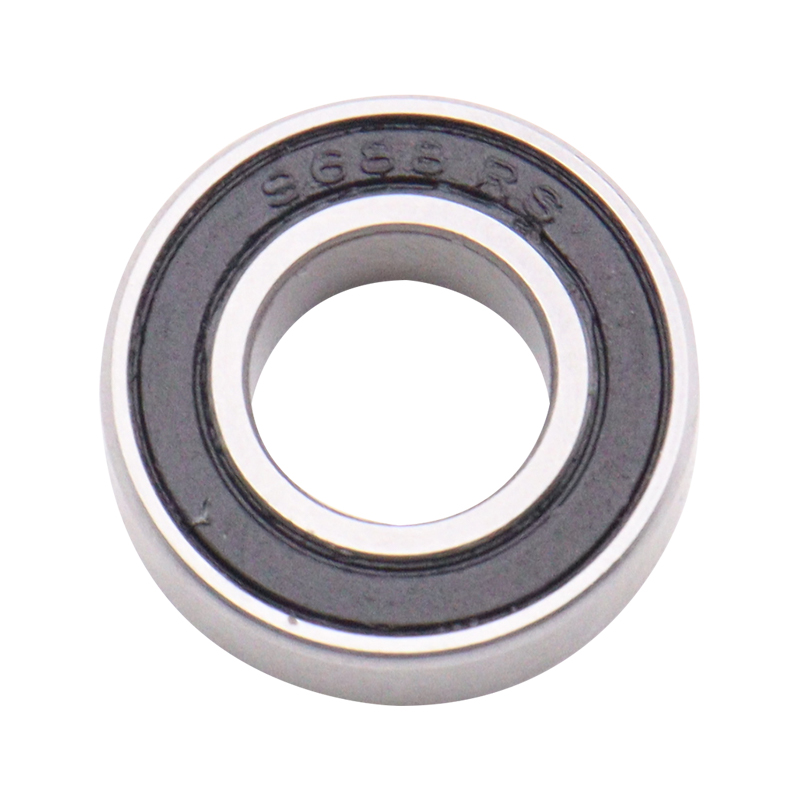
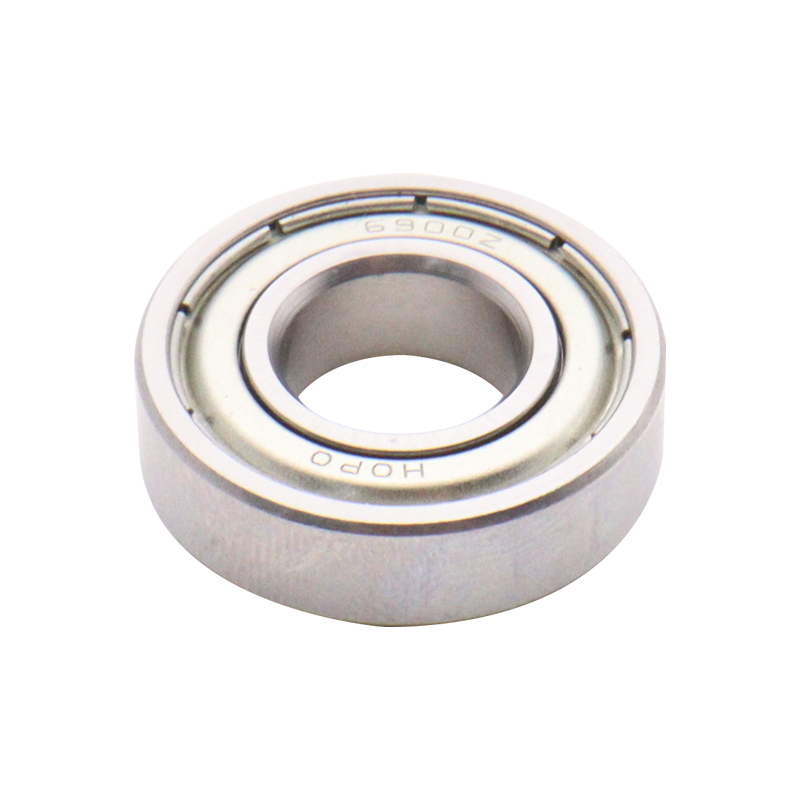
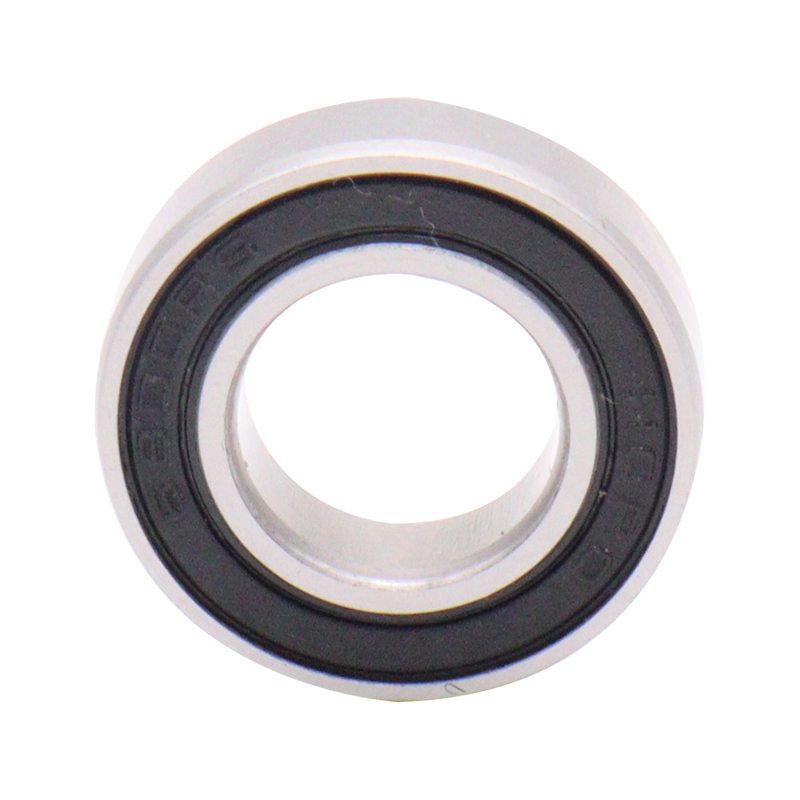
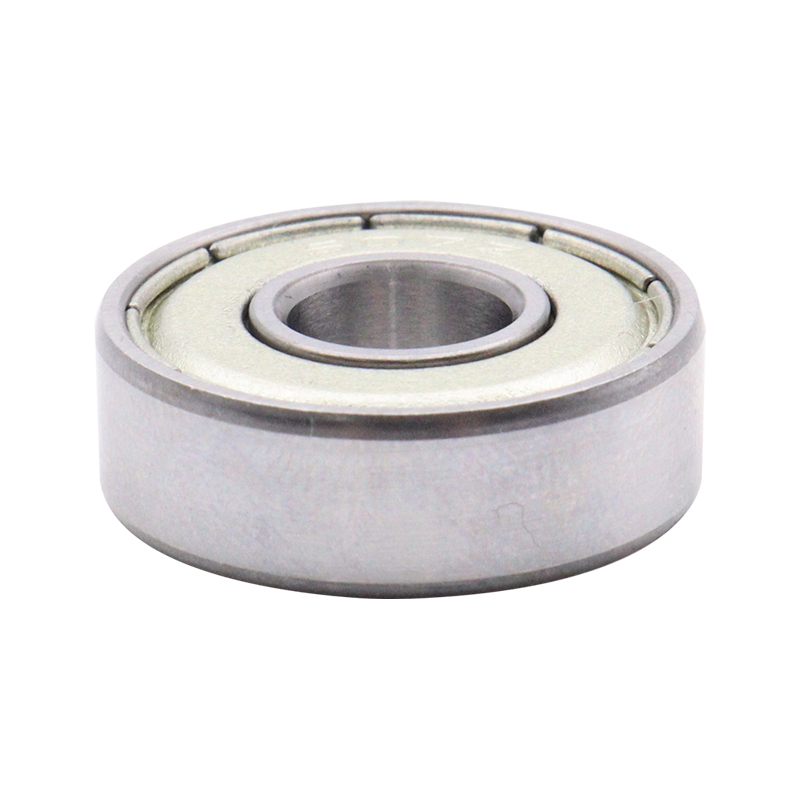
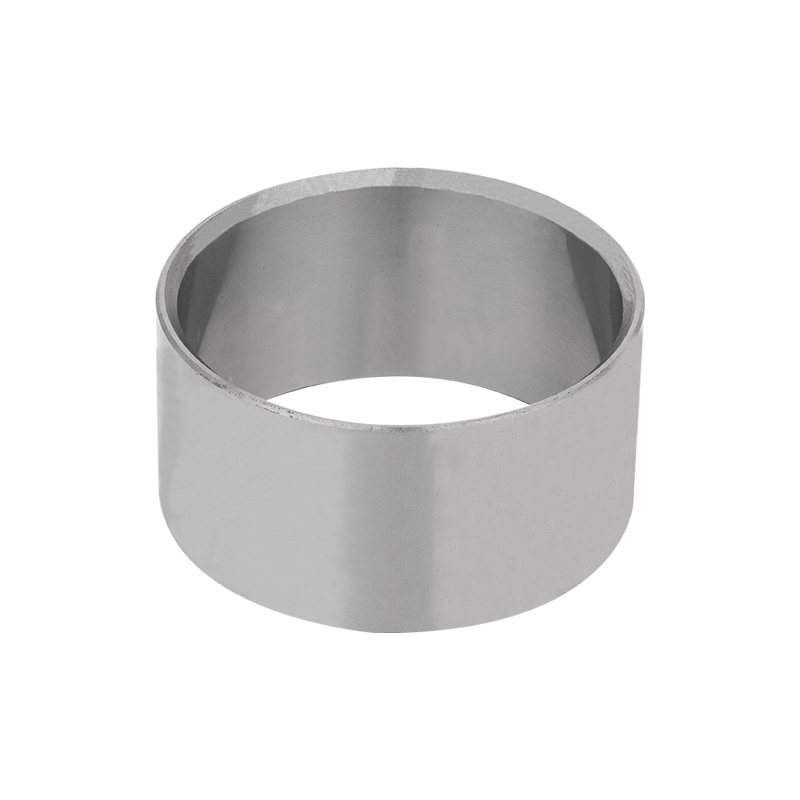
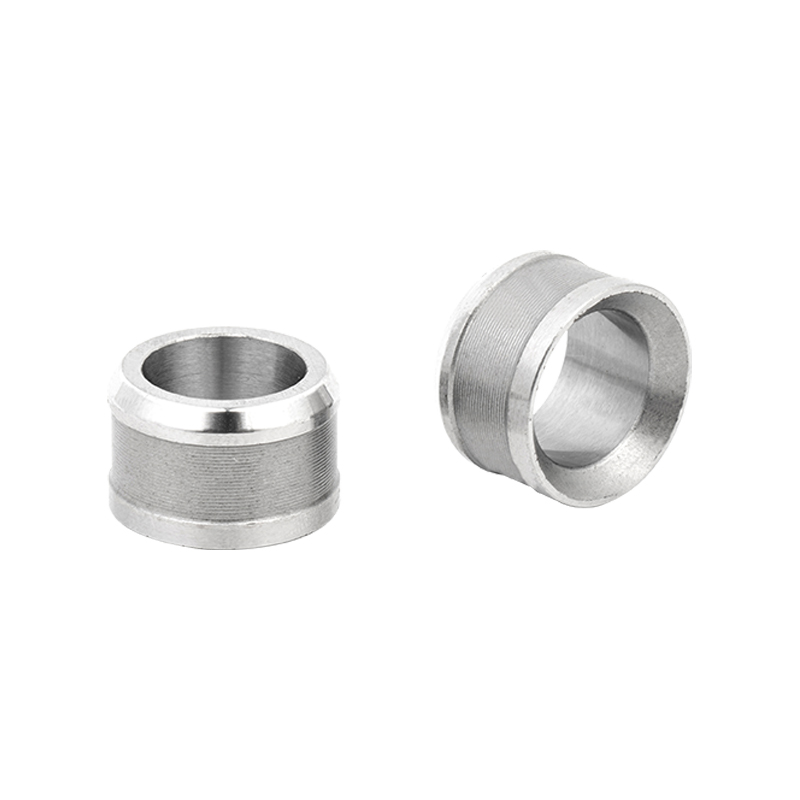
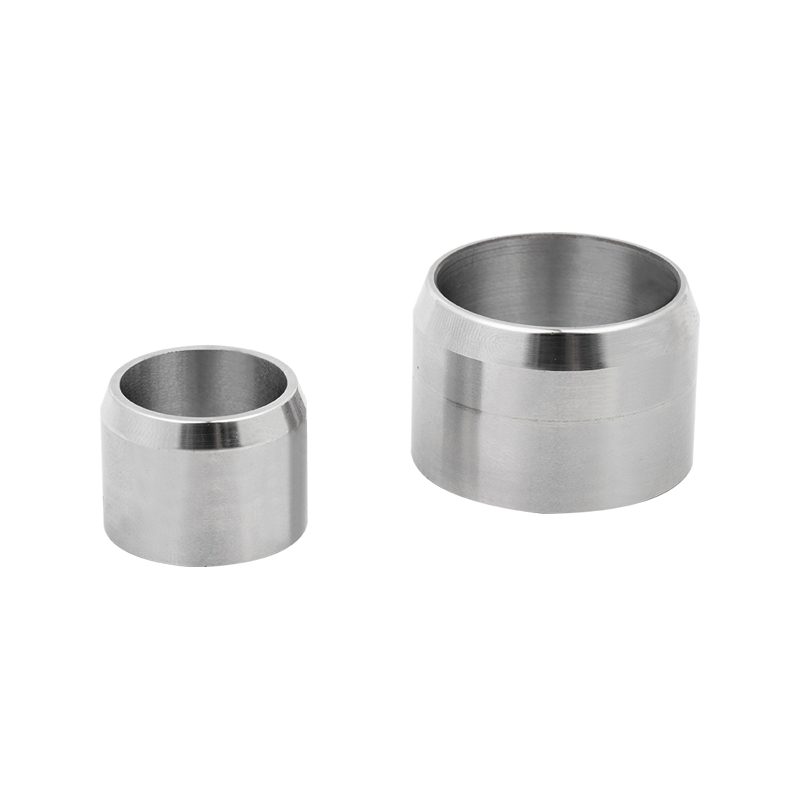
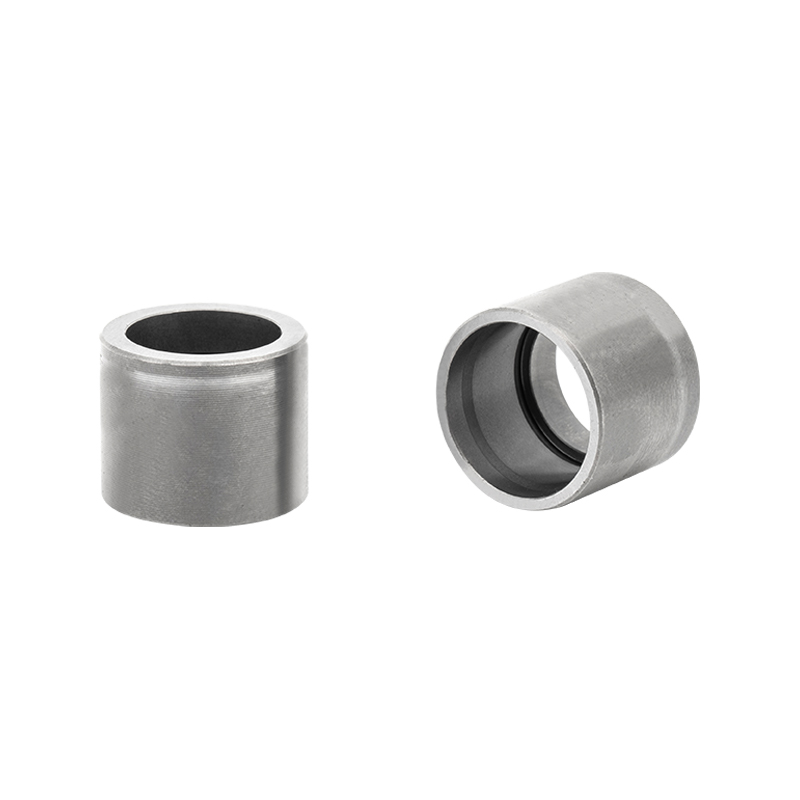
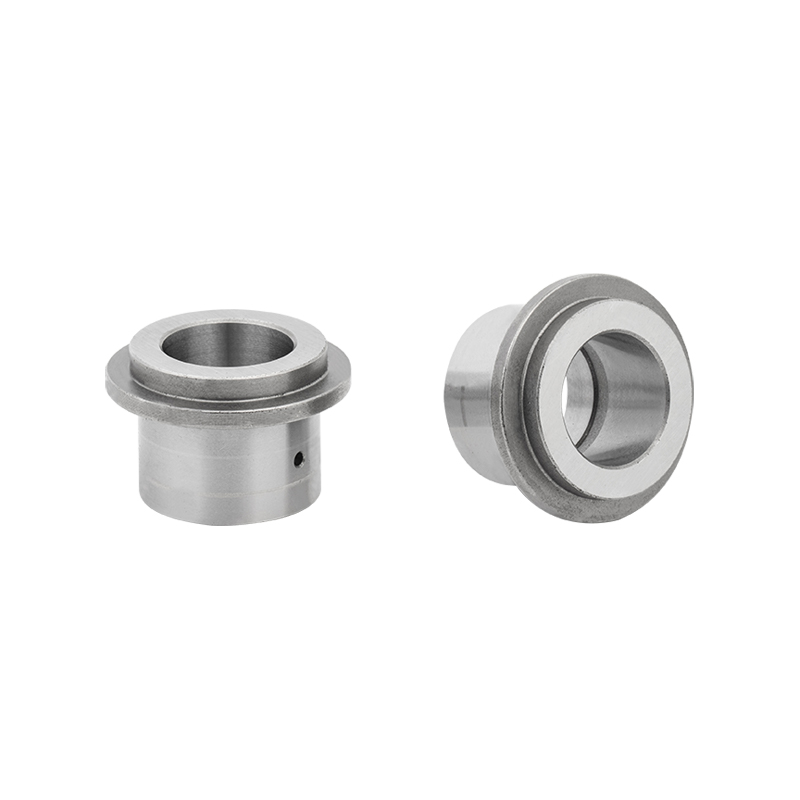

 Download Catalog
Download Catalog
